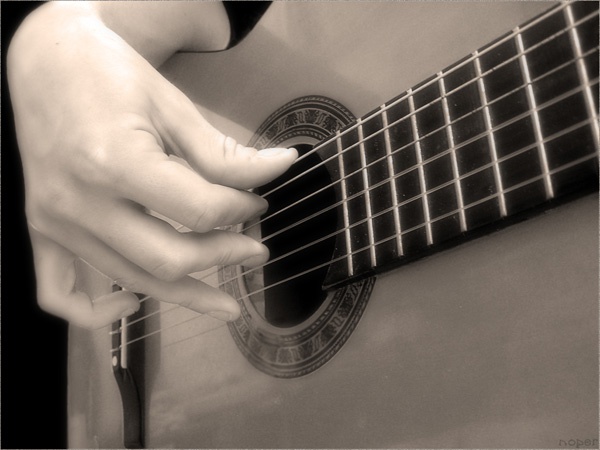Instruction
1
Examine the reception theory. "Six" is of two kinds. The first execution is performed without killing the strings. The second type of "army combat," involves muting the strings. You need to learn how to play two types, since depending on the song you will need to choose a certain way accompany. Some songs you can perform either one type or the other.
2
Go to the practice. Learn to play "six" without a cap. This technique consists of six elements: down, down, up, up, down, up. So you strum down then down again and further under the scheme. Blow to the strings, you can do as your thumb and several. Traditionally, the "army combat" is enabled only the index finger. During practice, it's hard to transition from the fourth to the fifth element. Therefore, we will focus our attention on this part of the reception. Once you master this way of playing, start to choose the rhythm. Then go on to study the second of the "six".
3
Learn to play "army battle" with a dummy string. This technique differs from the preceding only by the presence of two stubs. The scheme of this battle as follows: down, mute, up, up, mute, up. That is, instead of two "down" we play muffling the strings with the edge of the palm. Here we should pay attention to the transition between the fifth element and the sixth. Also beginners it is hard to produce a smooth and rhythmic transition between the sixth and the first element (the repetition).
4
Start the practice using two chords. For each chord play all the reception. When switching to a different chord and start all over again. The time between the transitions of the chords should be exactly worked out. It is important not to lose the rhythm and not get lost in the elements of performance combat.
Note
Before you begin to play "fight", you need to learn how to set chords on the guitar fretboard and play them at slow speed to avoid stops during. You should try to sing one of your favorite songs, strumming lightly on the guitar. If you succeed, then you can begin learning "battles."
Useful advice
Урок5 Learning guitar, learn to play the guitar, want to learn to play the guitar, how to play guitar how to learn to play the guitar, bust, Fight, complex fight, the course, the school of the guitar, pinch, disc, learn to play guitar chords, complex chords, mediator, guitar lessons, lessons guitar, device, settings, to tune your guitar, stretch the fingers, slozhnosmeshannye overkill, Barre.
